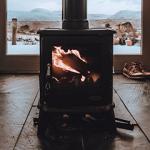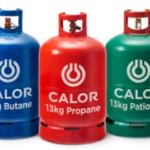

How to get the most from your wood burner
If you are new to wood burners, you may find your stove isn’t always working at maximum efficiency, and this could be causing you to spend more money to heat your home. In this article, we will look at how you can increase the efficiency of your wood burner with some simple tips and advice.
Starting your fire
When it comes to choosing the logs for your wood burner, try and use ones that have a moisture content below 20%, which typically means it has been well-seasoned. The wood should make a hollow sound when you bang two pieces together, and you may notice the bark is coming loose, and hardwood burns slower than softwood, so is a much better option.
You should make use of plenty of paper to aid the ignition of your kindling sticks, but don’t twist, roll or fold the paper as this prevents airflow and will give you a slow smoky burn. Just crumple the paper slightly and make sure you almost fill the firebox completely but without blocking the flue.
When the fire is lit
As soon as the paper is well alight, you can then fasten the door shut, whilst making sure the vents at the bottom and top are open, as if these are closed the fire will be starved of oxygen and will go out.
When the paper kindling is burning strongly, typically after a couple of minutes, you can then add some small logs, and these can be pre-heated under the fire, but don’t be tempted to add too many in one go, as this may quell the fire rather than feed it.
Keeping it going
As the fire burns stronger you can add larger logs at regular intervals and try to position the logs with a 1 to 2-centimetre gap between them to aid airflow.
When the fire becomes well-established, usually after 10 minutes, you can begin to close the bottom vent, but do this slowly at first as you may kill the fire if you close it too quickly. This will help the wood to last longer, giving you much more efficient and cost-effective use of your wood burner this winter.
